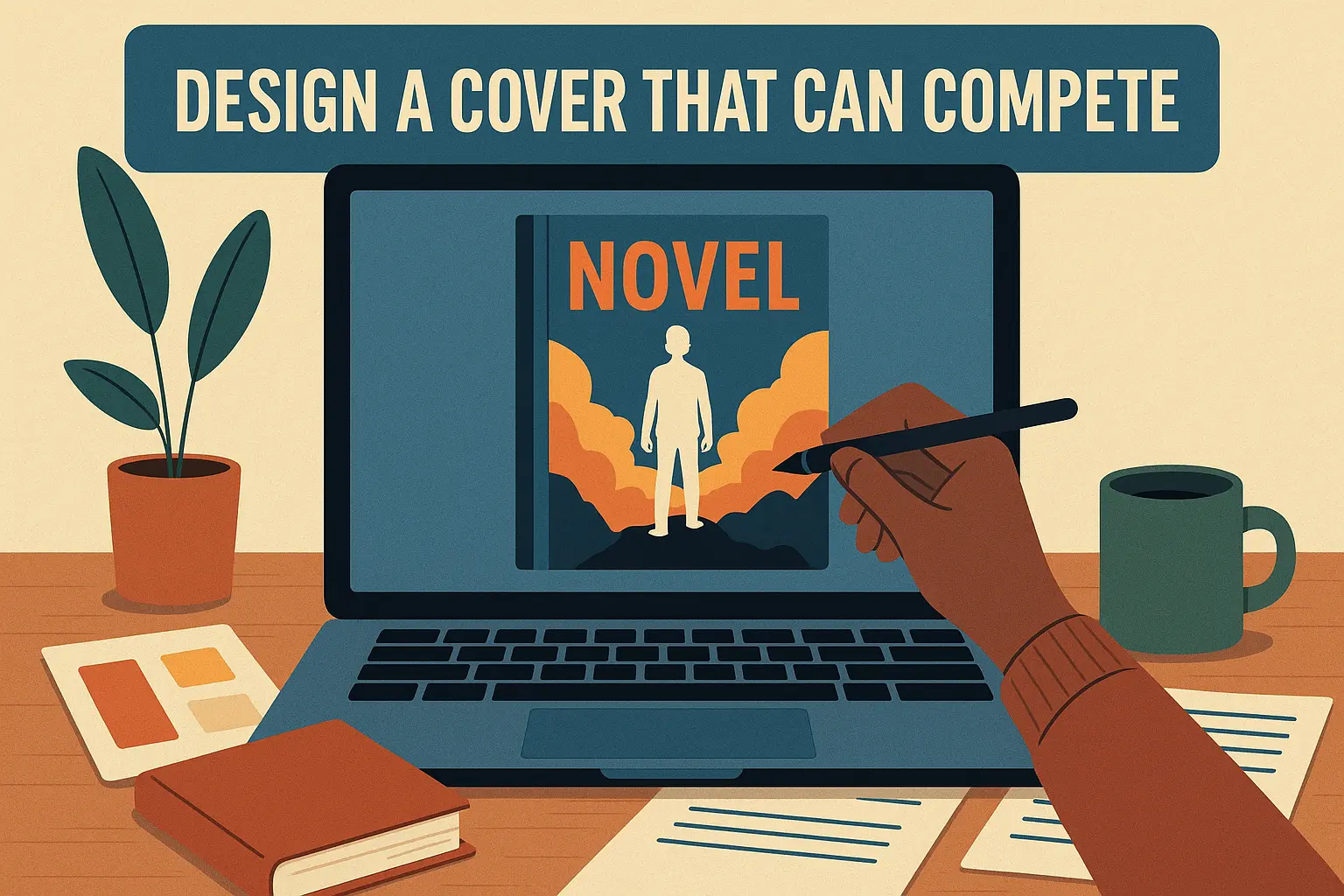Self-publishing doesn’t have to be expensive. Yes, plenty of authors invest thousands in editing, design, and ads — but you can ship a professional-looking first novel with a lean plan, smart tools, and a focus on reader-facing quality. Below is a step-by-step path tailored to 2025 trends, with budget-savvy options at every stage.
Choose Your Publishing Path (KU, Wide, or Hybrid-Wide)
First, decide where your ebook will live.
KDP Select / Kindle Unlimited (KU): Enroll your ebook exclusively with Amazon for 90-day periods to earn page-read royalties and access built-in promos (Free Days, Countdown Deals). This is strong for certain genres (romance, romantasy, thrillers) and rapid-release authors.
Wide distribution: Publish your ebook to all major stores (Apple Books, Kobo, Barnes & Noble, Google Play) and libraries via an aggregator like Draft2Digital. This diversifies income and reduces Amazon dependence; D2D also offers opt-in programs like Kobo Plus subscription reading.
Print: Use KDP Print for Amazon and (optionally) IngramSpark for the rest of the world’s bookstores and libraries. IngramSpark’s network reaches 45,000+ locations and prints in multiple regions to reduce shipping/time.
New in 2025 worth watching: Multiple industry sources report that KDP Select now allows library distribution of KU ebooks via third parties, without breaking exclusivity — something that was not allowed before. If you go KU, this could let you reach public libraries (e.g., OverDrive, Hoopla) and keep KU benefits. Verify current terms before you act, as this is still rolling out.
Keep Editing Costs Low — Without Publishing a Draft
Editing is the biggest line item for most authors. You can reduce spend while protecting quality.
Stage your editing:
- Self-edit with modern tools (ProWritingAid/Grammarly) and a style pass.
- Recruit beta readers and a genre-savvy critique partner.
- Pay for the highest-leverage pro pass you can afford (often copyedit or proofread).
If/when you hire, marketplaces like Reedsy offer vetted pros and transparent pricing; just know professional edits can quickly add up.
Scope smart: If a full developmental edit isn’t feasible now, buy a manuscript assessment (cheaper, high-impact feedback) and handle revisions yourself before a lighter copyedit.
Design a Cover That Can Compete

Covers sell books — especially in mobile storefronts.
Budget paths:
- Premade covers from reputable designers can run far less than custom and still look professional.
- DIY with templates (e.g., Canva) only if you’re committed to genre-accurate typography, contrast, and thumbnail legibility. Study current bestsellers in your genre and echo their visual signals.
If you plan print, ensure your designer delivers both ebook and POD wrap files (with correct spine width/bleed).
Format Once, Publish Everywhere
Use free/low-cost tools (Vellum alternative, Atticus, Reedsy Book Editor) to export clean EPUB and print PDFs.
Upload to KDP (ebook + print) and, if going wide, to Draft2Digital for other stores and libraries.
Consider IngramSpark for print-wide. Setup fees were dropped in 2023 (great for budgets), though a 1% distribution fee applies on wholesale sales.
Lean Marketing: What Actually Moves the Needle in 2025
The biggest shifts in the last 18 months favor direct audience building and price-driven discoverability.
Email first: Industry reports highlight a continued pivot to owning reader relationships via newsletters and direct-to-reader channels. Free platforms like Substack or low-cost ConvertKit tiers can get you started; add a magnet (prequel, bonus epilogue) to grow signups.
Direct sales are growing: Even without stocking/shipping, you can sell ebooks and audiobooks direct (Shopify/WooCommerce) and deliver securely via BookFunnel, which handles device support for readers. This keeps more revenue and gives you buyer emails.
Price promos still work: Running limited discounts (free or $0.99) and “promo stacking” across newsletters/ads remains a cost-effective way to spike visibility and series read-through.
Go where readers already are (BookTok): “Romantasy” and adjacent genres continue to surge thanks to TikTok/BookTok — even vaulting self-pub authors to major deals. If your novel fits trend-heavy categories, short, authentic creator content can punch far above its cost.
Budget-Friendly Launch Plan (Checklist)
- Pick a path: KU for borrow-heavy genres or wide for diversified reach (with D2D/Kobo Plus).
- Lock metadata: A sharp subtitle, 7 keywords, accurate categories. Study top-ranked books in your niche and mirror reader language.
- ARC team: Recruit 15–50 early readers for day-one reviews (no compensation beyond a free copy).
- Price strategy: Consider an intro discount (free/$0.99 for 3–7 days) to seed clicks and reviews, then move to your target price. Pair with a small BookBub Ads test to refine audiences cheaply.
- Email & social: Send 2–3 short emails (cover reveal, live link, last-day discount). On social, post short clips: hook, tropes, comps, and aesthetic.
- Library reach: If you’re wide, enable library channels in D2D. If you’re KU, watch the 2025 change allowing library distribution during Select — opt only into library channels to stay compliant while it finalizes.
- Print-on-demand: List paperback via KDP for Amazon and consider IngramSpark for broader bookstore availability.
- Long tail: Publish a reader magnet, build your list, and plan Book 2. The trend toward audience-first rewards consistency.
Keep Your Book Compliant (2025 Updates)
AI content disclosure at KDP: If any part of your interior or images is AI-generated, Amazon requires that you disclose it during upload or when republishing. AI-assisted is treated differently. Don’t skip this; non-compliance can cause headaches.
Genre & content quality: TikTok-fueled demand is real, but readers punish low-effort books. Protect your reputation with at least one professional edit pass before launch.
What a “Lean” Budget Can Look Like
You can release a credible first novel on a few hundred dollars if you spend where readers notice most.
- Editing: If funds are tight, pay for a copyedit/proof (or a thorough proof) and put more sweat equity into developmental revisions via betas.
- Cover: Buy a premade or budget a small custom.
- Zero-waste marketing: Email list + limited price promo + targeted newsletter/BookBub Ads tests.
For context, many surveys place professional self-publishing costs in the low-to-mid thousands, but a frugal, first-time launch can come in far lower with the strategies above.
Quick, Low-Cost Toolkit (Save This)
- Distribution: KDP; Draft2Digital (wide + libraries); IngramSpark (print-wide).
- Direct sales: Your Shopify/WooCommerce + BookFunnel delivery (automated fulfillment & support).
- Ads & promos: BookBub Featured Deals (apply) and self-serve BookBub Ads for small-budget testing.
- Education you can trust: Jane Friedman’s evergreen self-publishing primers and publishing-path overviews, updated for 2025.
- Trend intelligence: Written Word Media’s annual trends recap (audience-first, email, direct sales growth, AI usage), plus MIBLART’s design/market observations.
Final Takeaway
In 2025, authors who own their audience, price/promote strategically, and ship clean, on-genre books can launch on a shoestring and still build momentum. Start with one retail strategy (KU or wide), keep your spend focused on editing and cover, and use email, direct sales, and price promos to find your first 1,000 true fans. The playbook above balances frugality with what readers actually see — and that’s what sells books.



